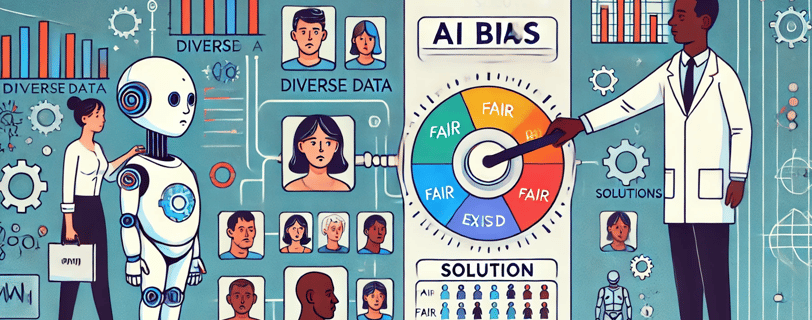AI Bias and how to fix it 101
Fixing AI bias is essential to ensure fairness and prevent discrimination in automated decision-making. By using diverse datasets, applying fairness algorithms, and auditing systems regularly, we can reduce bias. Addressing AI bias promotes ethical practices, builds trust, and ensures that AI technologies benefit all individuals, not just a select few. Here is how we can fix it
2/27/20252 min read
AI Bias and Why It’s Important to Fix It
AI bias occurs when an artificial intelligence system produces unfair or discriminatory results due to biased data, flawed algorithms, or human assumptions. Since AI is increasingly used in critical areas like research, learning, hiring, healthcare, finance, and criminal justice, biased outcomes can perpetuate existing inequalities and harm marginalised groups. Fixing AI bias is essential to ensure fairness, accountability, and ethical decision-making, ultimately helping build trust in AI systems and promoting more equitable outcomes for everyone.
How AI processes data
Artificial Inteligence is built using algorithms that enable machines to learn and make decisions. While AI can generate and transform information, it does not create entirely original ideas. It trained on data sets that carry human knowledge, biases, and limitations. AI processes data based on patterns learned from its training data, and if that data contains biases, the AI can reflect those biases in its output.
AI Bias and how to fix it
Bias can’t always be eliminated, but are some ways that we can actively identifying and addressing it to have fairer and more responsible AI.
Data-Related Bias (Bias in Input Data & Collection)
Biases that come from flawed or incomplete training data.
Fixes: Diverse datasets, data auditing, balancing, anonymisation, synthetic data, augmentation.Algorithmic & Model Bias (Bias in How AI Learns & Processes Information)
AI can learn unintended patterns or be overly influenced by specific features.
Fixes:Use fairness constraints (e.g., equalised odds, demographic parity).
Apply adversarial debiasing (train AI to ignore biased patterns).
Regularisation techniques to prevent overfitting to biased data.
Programming & Code Bias (Bias Inherent to the Development Process)
AI models inherit biases from how they are programmed, structured, and optimized:
a) Feature Selection Bias
Developers choose which input features the AI model learns from, sometimes reinforcing existing biases.
Fix: Carefully analyse feature importance and remove unnecessary biased features.
b) Labeling Bias
Human-labeled datasets may reflect subjective judgments (e.g., defining "professionalism" in hiring AI).
Fix: Use diverse labellers, multiple annotations, and debias labelling workflows.c) Optimisation Bias
AI models are optimised for performance metrics like accuracy, which can favour majority groups.
Fix: Optimise for fairness-aware metrics (equalised odds, fairness constraints).d) Default Parameter Bias
Many AI frameworks use default settings that may amplify bias (e.g., decision thresholds, priors).
Fix: Tune hyper-parameters to ensure fairer outcomes.e) Hardcoded Rules & Logic Bias
If-else rules and logic statements can reflect developer assumptions (e.g., gendered pronouns, cultural norms).
Fix: Regularly audit code for implicit assumptions and biases.f) Computational Resource Bias
Some groups may have less data or computing power, leading to models that favor well-represented groups.
Fix: Ensure fair representation by allocating resources more equitably.Human & Organisational Bias (Bias in How AI is Built & Used)
Even if AI is neutral, the way it's designed, deployed, and interpreted can introduce bias.
a) Developer Bias
Engineers and data scientists bring their own biases into AI design (unconscious assumptions).
Fix: Encourage diverse teams & external audits.b) Business & Stakeholder Bias
Companies optimise AI for profitability, not fairness.
-Fix: Set ethical guidelines & regulatory oversight.c) Deployment Bias
AI may behave differently in the real world than in lab tests.
Fix: Continuous monitoring & user feedback.Bias in Model Outputs (Bias in How AI Generates Results)
AI may generate biased outputs based on skewed learning patterns.
Fixes:Apply post-processing fairness techniques to correct outputs.
Use human review for high-impact decisions.
Implement explainable AI (XAI) to identify biased logic.


